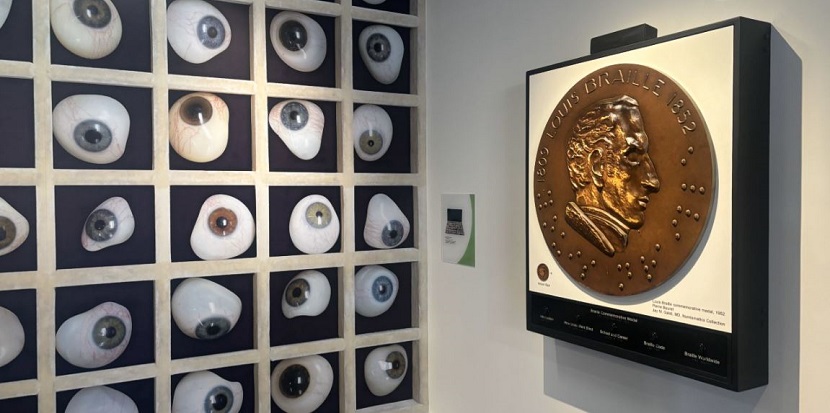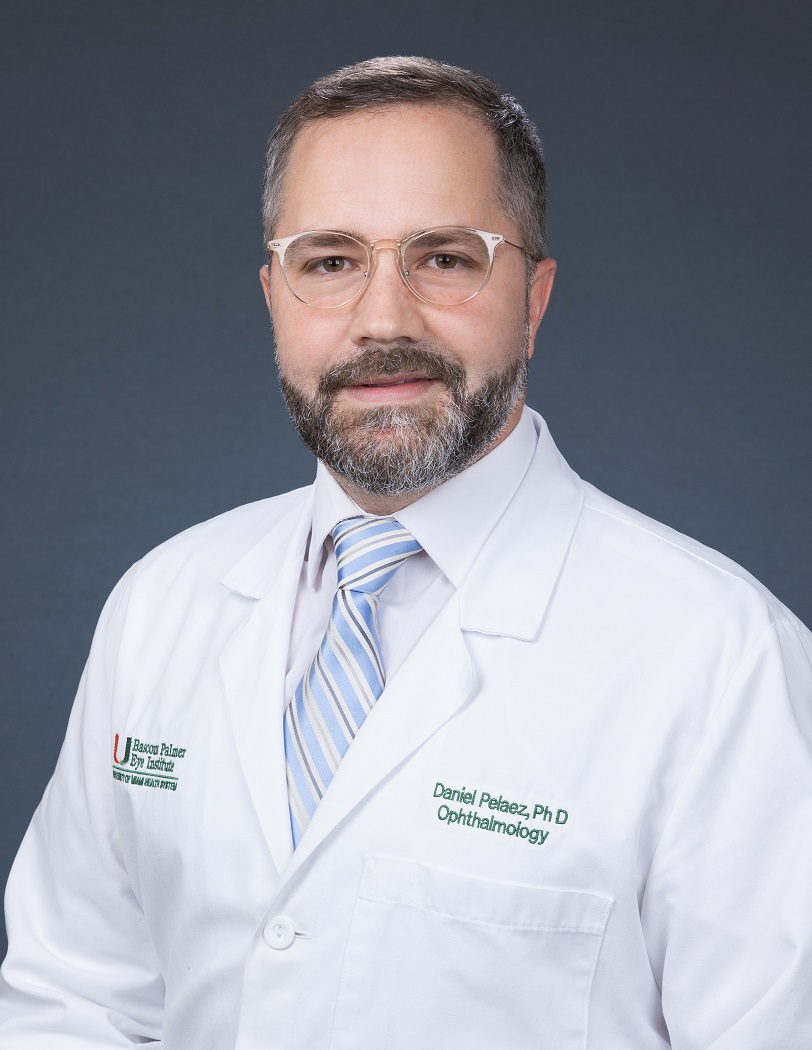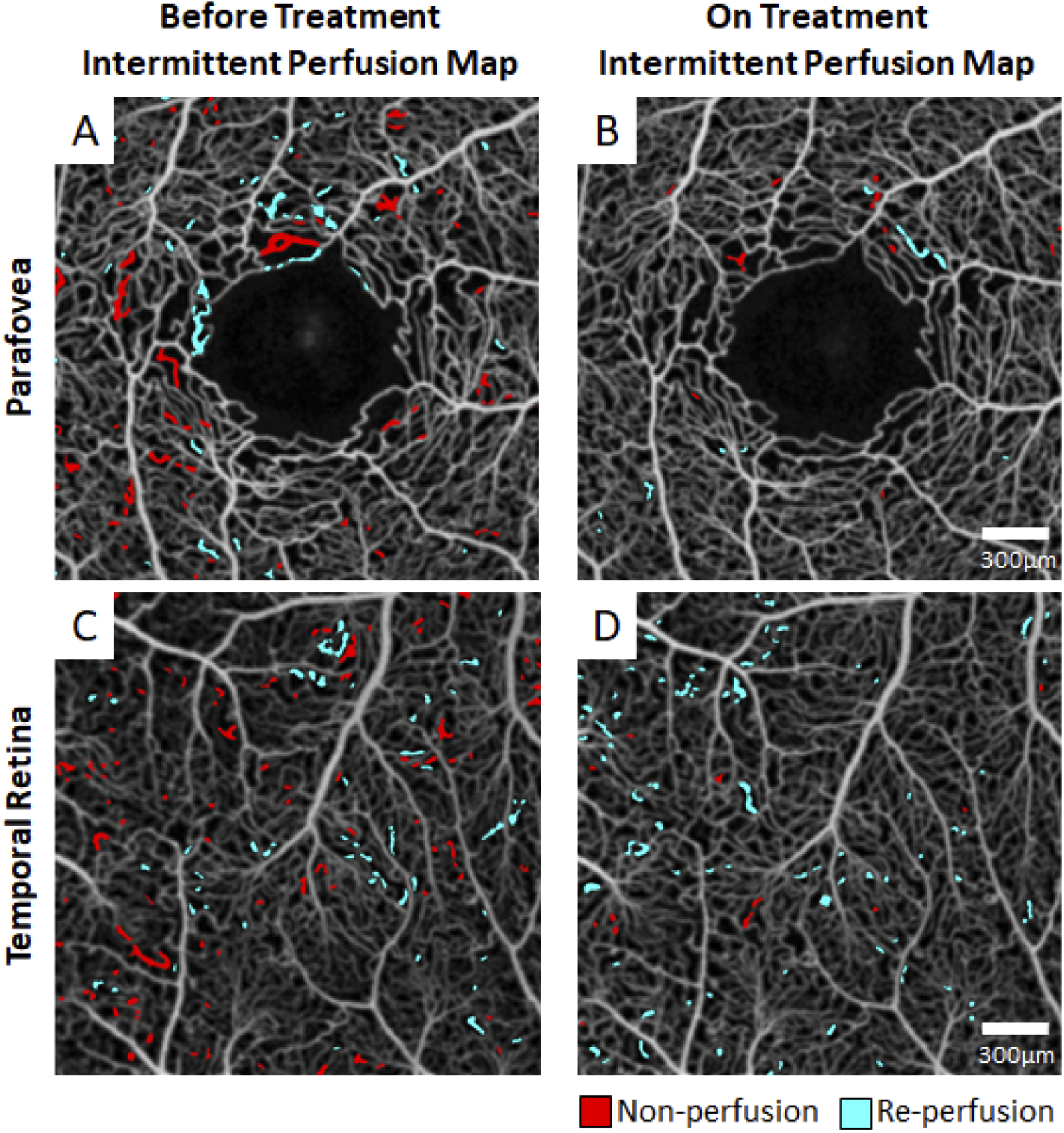The Truhlsen-Marmor Museum of the Eye® today introduced a first for San Francisco, a tactile exhibit to improve accessibility and inclusion for those who are blind and visually impaired.

news, journals and articles from all over the world.

The Truhlsen-Marmor Museum of the Eye® today introduced a first for San Francisco, a tactile exhibit to improve accessibility and inclusion for those who are blind and visually impaired.

Researchers with Bascom Palmer Eye Institute are tackling the formidable task of surgically recovering a live human eye and maintaining its function for vision restoration through organ transplantation.
The American Academy of Ophthalmology, in partnership with FundamentalVR today announced the launch of the Academy’s VR Education program, a groundbreaking initiative that harnesses the power of virtual reality (VR) to transform ophthalmic education and surgical training.

There’s only one U.S. Food and Drug Administration-approved therapy for an inherited retinal disease, and dozens of retinitis pigmentosa (RP) genes for which no therapy is available.
Indiana University School of Medicine’s Yoshikazu Imanishi, PhD, was recently awarded a four-year, $2.1 million grant from the National Eye Institute and a three-year, $500,000 grant from the Foundation Fighting Blindness to study genetic causes of blindness.
BRILLIANCE trial results showed 11 out of 14 treated participants experienced some improvements in vision and quality of life measures. CRISPR-based therapy was found safe with no dose-limiting toxicities reported. Mass Eye and Ear researchers say their findings support continued…
Research to Prevent Blindness is pleased to announce that it has opened a new round of grant funding for high-impact vision research, including research related to glaucoma, age-related macular degeneration, inherited retinal diseases, myopia, amblyopia, low vision and many more.
Clever bio-inks that sit inside the human body and restore damaged neurons could cure a whole swathe of diseases in the next 20 years: conditions that have baffled scientists and clinicians for centuries.
Leaders of organizations that fund vision research convene in Washington, D.C. to increase collaboration and maximize the impact of research funding for sight-threatening diseases.
The Korea Institute of Science and Technology (KIST) announced that Dr. Maesoon Im of the Brain Science Institute, together with Prof. Seung Ja Oh of Kyung Hee University and Prof. Kangwon Lee of Seoul National University, successfully incorporated anti-inflammatory drugs into a hydrogel to suppress inflammation in the retina and effectively deliver the drugs to the inflamed area.
As the number of sexually transmitted infections (STIs) sharply rises in the U.S., new evidence suggests that a common antibiotic—doxycycline—could help prevent the spread of some bacterial infections.
Researchers hope at least one will treat progressive blindness caused by Usher syndrome type 1F
A new compound developed at the University of Illinois Chicago potentially could offer an alternative to injections for the millions of people who suffer from an eye condition that causes blindness
A special antibody derived from llamas —called a nanobody — can stop the misfolding and the activation of Rhodopsin, a molecule whose mutations can lead to blindness.
Scientists have found a way to use nanotechnology to create a 3D ‘scaffold’ to grow cells from the retina –paving the way for potential new ways of treating a common cause of blindness.
Patricia Ann D’Amore, PhD, MBA, has been selected as the 2024 RPB David F. Weeks Award for Outstanding Vision Research (Weeks Award). Dr. D’Amore will receive her award and deliver a presentation during the AUPO 2024 Annual Meeting in Austin, Texas in February.
Designed by researchers at NYU Tandon School of Engineering and NYU Grossman School of Medicine, Commute Booster routes public-transportation users through the “middle mile” – the part of a journey inside subway stations or other similar transit hubs – in addition to the “first” and “last” miles that bring travelers to and from those hubs.
The Excellence Center for Glaucoma, Department of Ophthalmology, Faculty of Medicine, Chulalongkorn University, King Chulalongkorn Memorial Hospital, and Thai Glaucoma Society encourage all of us to realize the significance of glaucoma as it is the world’s number 1 cause of irreversible blindness. In Thailand, over 2 million people are affected by glaucoma.
Researchers design “mini gene” therapy for severe syndrome that causes blindness and deafness
Research to Prevent Blindness (RPB) announces two new grants to support high-impact vision research. The new grants are the: RPB / Tom Wertheimer Career Development Award in Data Science and RPB / Mary Tyler Moore Vision Initiative Physician-Scientist Award.
For the first time, researchers have developed a form of the omega-3 fatty acid docosahexaenoic acid (DHA) that is capable of crossing into the eye’s retina to ward off visual declines related to Alzheimer’s disease, diabetes and other disorders.
Today, Research to Prevent Blindness (RPB) and more than 30 other organizations are convening in Washington DC for the Vision Research Funding Partnership event, which was organized around the theme of “The Research Pipeline – From Premise to Patient.”
视网膜色素变性症是人类失明的主要原因之一。中国的研究人员成功地恢复了患有视网膜色素变性症的小鼠的视力。该研究将于[三月十七日]发表在《实验医学杂志》上。该研究使用一种新型的、高度通用的CRISPR基因组编辑技术,有潜力纠正各种导致疾病的遗传突变。
Researchers in China have successfully restored the vision of mice with retinitis pigmentosa, one of the major causes of blindness in humans. The study, to be published March 17 in the Journal of Experimental Medicine, uses a new, highly versatile form of CRISPR-based genome editing with the potential to correct a wide variety of disease-causing genetic mutations.
Researchers discover new clues for causes of adult-onset macular degeneration.
A collaborative team of academia, industry, start-ups, and non-profits, led by Jenna Gorlewicz, Ph.D., associate professor in aerospace and mechanical engineering and associate dean of research and innovation in the School of Science and Engineering at Saint Louis University, was awarded a National Science Foundation (NSF) grant to develop technology to enhance the quality of life, employment access, and opportunities for persons with disabilities.
Research to Prevent Blindness announces a new round of awardees who are generating critical knowledge around a host of sight-threatening conditions. With this latest round of funding, RPB has provided more than $400 million in research funding.
Patients’ low-light sensitivity improved by factors of thousands in a clinical trial
David J. Calkins, PhD, has been selected as the 2023 RPB David F. Weeks Award for Outstanding Vision Research.
Lithophane is an ancient artistic medium but never used to represent scientific data and imagery in a quantitative, controlled manner for tactile visualization and integration. Lithophane combined with 3D printing is turning scientific data into tactile graphics for all to see by eyesight or touch.
A recent study highlights the range of uncomfortable situations people living with blindness or visual impairment encounter due to interpersonal communication challenges, and outlines strategies people with visual impairment use to navigate these situations.
Award recipients to use the American Academy of Ophthalmology IRIS® Registry (Intelligent Research in Sight) clinical database to improve care for all patients
Black patients have a dramatically higher risk of advanced vision loss after a new diagnosis of primary open angle glaucoma (POAG) when compared to white patients, according to a new study from New York Eye and Ear Infirmary of Mount Sinai (NYEE).
Patients with a specific form of age-related macular degeneration (AMD), a leading cause of blindness in the United States, are at significant risk for cardiovascular disease and stroke, according to new research from New York Eye and Ear Infirmary of Mount Sinai.
America’s retina specialists are warning the public that millions in the US who don’t know the facts about common retinal conditions such as age-related macular degeneration (AMD) and diabetic retinopathy are at risk for preventable blindness or vision loss from these sight stealing conditions.
Equipped with a color 3D camera, an inertial measurement sensor, and its own on-board computer, a newly improved robotic cane could offer blind and visually impaired users a new way to navigate indoors.
The American Academy of Ophthalmology and Research to Prevent Blindness (RPB) today announced the recipients of the Research to Prevent Blindness/American Academy of Ophthalmology Award for IRIS® Registry Research.
This summer, enjoy celebrating art while you double the impact of your contribution to glaucoma research.
With the National Eye Institute reporting that about 11 million older adults in the U.S. endure a condition that leads to progressive blindness, known as age-related macular degeneration, University of Maryland School of Medicine (UMSOM) researchers are starting to understand what goes wrong in the disease, in order to develop new therapies to treat it.
New research in rats suggests a common antioxidant supplement may protect the next generation from a leading cause of blindness stemming from a high-sugar diet during pregnancy. The study is published ahead of print in the American Journal of Physiology-Endocrinology and Metabolism.

(New York, NY – May 10, 2021)- Ophthalmologists at New York Eye and Ear Infirmary of Mount Sinai have created a new technique to evaluate patients with sickle cell retinopathy and assess the disease before it progresses and leads to…
As regenerative therapies for blinding diseases move closer to clinical trials, the National Eye Institute’s functional imaging consortium, a part of the NEI Audacious Goals Initiative (AGI), is pioneering noninvasive technologies to monitor the function of the retina’s light-sensing neurons and their connections to the brain.
A new gene therapy for one of the most common forms of congenital blindness was safe and improved patients’ vision, according to initial data from a clinical trial.
A Penn Medicine patient with a genetic form of childhood blindness gained vision, which lasted more than a year, after receiving a single injection of an experimental RNA therapy into the eye.
Retinal cells derived from a cadaver human eye survived when transplanted into the eyes of primate models, an important advance in the development of cell therapy to treat blindness, according to a study published on January 14 in Stem Cell Reports.
Three University of Michigan researchers say eye care accessibility around the globe isn’t keeping up with an aging population, posing challenges for eye care professionals over the next 30 years.

Sobering new statistics released by the Global Burden of Disease study found no significant reduction in the number of people with treatable sight loss worldwide since 2010 as public health services failed to meet World Health Organization (WHO) targets.
The method currently used to produce stem cell-derived tissues has a very limited throughput. By semi-automating tissue differentiation, researchers from MIPT and Harvard have made the process nearly four times faster, without compromising on quality. The new algorithm is also useful for analyzing the factors that affect cell specialization.

Patients taking drugs called NRTIs to treat HIV and hepatitis B had a 33% lower risk of developing diabetes.
A new article published online in the Journal of the American Academy of Dermatology reveals just how common these illicit products are on popular e-commerce sites, increasing the public’s risk for severe and potentially long-term complications, including blindness, disfiguration, and stroke.